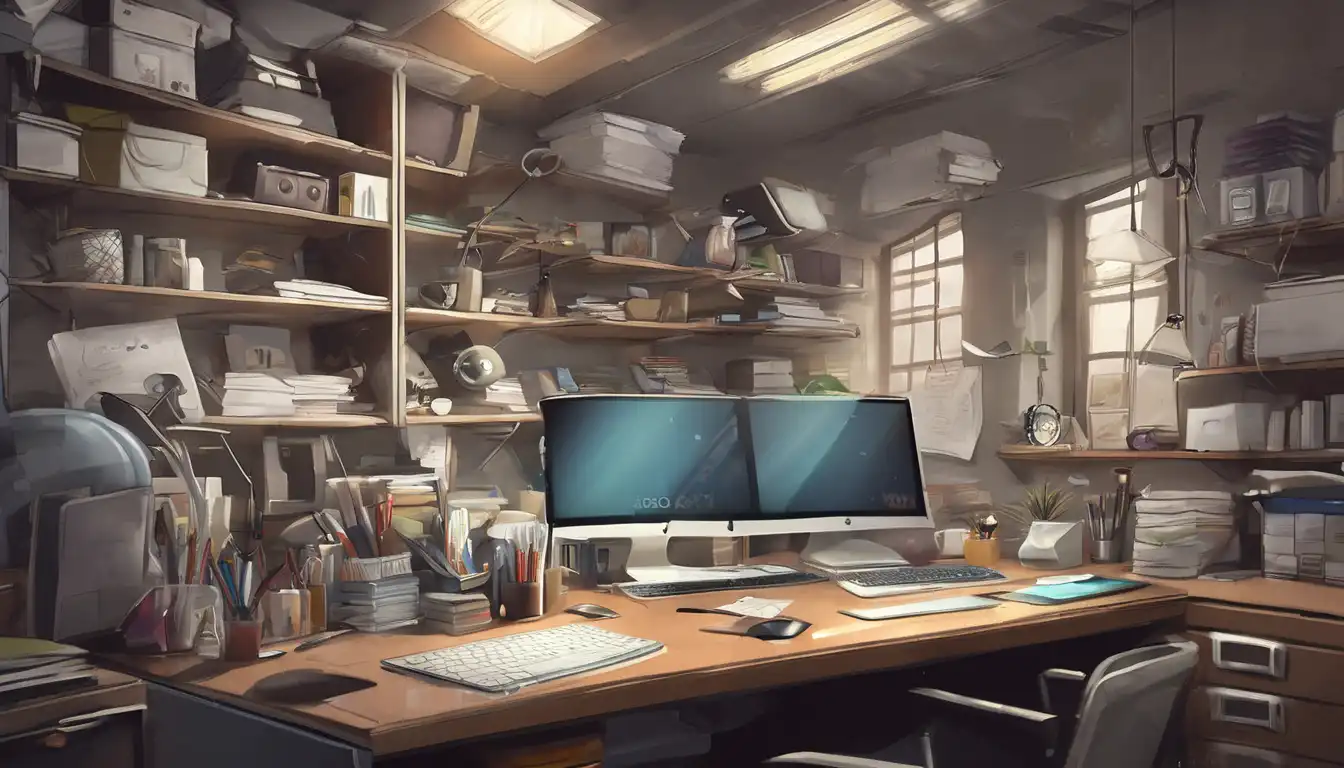Why Your Workspace Matters More Than You Think
Your physical environment plays a crucial role in your ability to concentrate and maintain productivity. Research from Princeton University Neuroscience Institute shows that clutter competes for your attention, resulting in decreased performance and increased stress. Whether you work from home or in a traditional office, creating an organized workspace isn't just about aesthetics—it's about optimizing your brain's ability to focus.
Many professionals underestimate how much their surroundings impact their work quality. A disorganized desk can lead to wasted time searching for documents, missed deadlines, and constant distractions. The good news is that with some strategic planning, you can transform any workspace into a productivity powerhouse.
The Psychology Behind Workspace Organization
Our brains are wired to seek order. When your environment is chaotic, your mind spends valuable cognitive resources processing unnecessary visual stimuli. This phenomenon, known as cognitive load, explains why you feel mentally exhausted after working in a cluttered space.
Organizational psychology research demonstrates that clean, well-organized environments promote:
- Enhanced mental clarity and decision-making
- Reduced stress and anxiety levels
- Improved information retention
- Faster task completion
- Increased creativity and problem-solving abilities
7 Essential Steps to Organize Your Workspace
1. Start with a Complete Clear-Out
Before you can organize effectively, you need to declutter completely. Remove everything from your desk and surrounding area. This might seem extreme, but it's the most effective way to assess what you truly need. As you sort through items, ask yourself: "Do I use this daily? Does this contribute to my work?" If the answer is no, consider storing, donating, or discarding it.
This process aligns with the KonMari method principles—keeping only items that "spark joy" or serve a clear purpose in your work life. Remember that minimalism doesn't mean stark emptiness; it means intentional curation.
2. Implement the Zones System
Divide your workspace into functional zones based on your workflow. Common zones include:
- Primary work zone: Computer, keyboard, mouse, and current project materials
- Reference zone: Frequently used books, manuals, or documents
- Supply zone: Pens, notebooks, staplers, and other essentials
- Personal zone: Photos, plants, or personal items that boost morale
This zoning approach reduces decision fatigue by creating predictable patterns for where items belong. When everything has a designated home, you spend less mental energy searching and more on actual work.
3. Optimize Your Digital Workspace
Physical organization is only half the battle. Your digital environment requires equal attention. Start by organizing your computer desktop, creating logical folder structures, and implementing consistent naming conventions. Use productivity tools like digital task managers to keep track of projects and deadlines.
Consider implementing the Inbox Zero approach for email management. Regular digital cleanup prevents virtual clutter from becoming mental clutter. For more digital organization strategies, check out our guide on essential productivity apps that can streamline your workflow.
4. Master Cable Management
Tangled cables create visual chaos and practical hazards. Invest in cable management solutions like:
- Cable sleeves or raceways
- Desk grommets
- Cable clips and ties
- Wireless alternatives where possible
Label both ends of important cables to save time during troubleshooting or reconfiguration. A clean cable setup not only looks professional but also makes maintenance much simpler.
5. Create an Ergonomic Foundation
Organization shouldn't compromise comfort. Proper ergonomics prevent physical strain that can distract from focus. Ensure your chair supports your lower back, your monitor is at eye level, and your keyboard allows for relaxed typing posture.
Consider adjustable standing desks or ergonomic accessories that promote movement throughout the day. Physical comfort directly impacts mental focus, making ergonomics an essential component of workspace organization.
6. Establish Maintenance Routines
Organization is not a one-time event but an ongoing practice. Develop daily and weekly routines to maintain your optimized workspace:
- 5-minute daily reset: End each workday by clearing surfaces and preparing for tomorrow
- Weekly deep clean: Wipe down surfaces, organize papers, and assess what needs adjustment
- Monthly review: Evaluate your system's effectiveness and make improvements
These habits prevent clutter from accumulating and ensure your workspace continues to support your focus goals.
7. Incorporate Focus-Enhancing Elements
Beyond pure organization, consider elements that actively promote concentration:
- Proper lighting: Natural light is ideal, but quality task lighting reduces eye strain
- Plants: NASA research shows certain plants improve air quality and reduce stress
- Noise control: Use white noise machines or noise-canceling headphones if needed
- Personal touches: Meaningful items that motivate without distracting
Common Organization Mistakes to Avoid
Even with good intentions, people often make organizational errors that undermine their focus goals. Avoid these common pitfalls:
Over-organizing: Creating systems so complex they become burdensome. The goal is efficiency, not perfection.
Ignoring workflow: Organizing based on aesthetics rather than how you actually work. Your system should match your natural patterns.
Neglecting digital space: Focusing only on physical organization while digital chaos persists.
One-size-fits-all approach: What works for others might not work for you. Customize systems to your specific needs and preferences.
Measuring the Impact on Your Focus
After implementing these strategies, track changes in your productivity. Notice reductions in time spent searching for items, decreased distraction frequency, and improved task completion rates. Many people report feeling calmer and more in control of their workday.
Remember that workspace organization is a personal journey. What matters most is creating an environment that supports your unique work style and focus needs. For additional productivity insights, explore our article on effective time management strategies that complement an organized workspace.
Conclusion: Your Path to Sustained Focus
Transforming your workspace into a focus-enhancing environment requires intention and consistency, but the rewards are substantial. By implementing these science-backed organization strategies, you're not just tidying up—you're creating conditions for peak mental performance.
Start with one area today, whether it's clearing your desk surface or organizing your digital files. Small, consistent improvements compound into significant focus gains over time. Your organized workspace will become your secret weapon for achieving deeper concentration and higher quality work.
